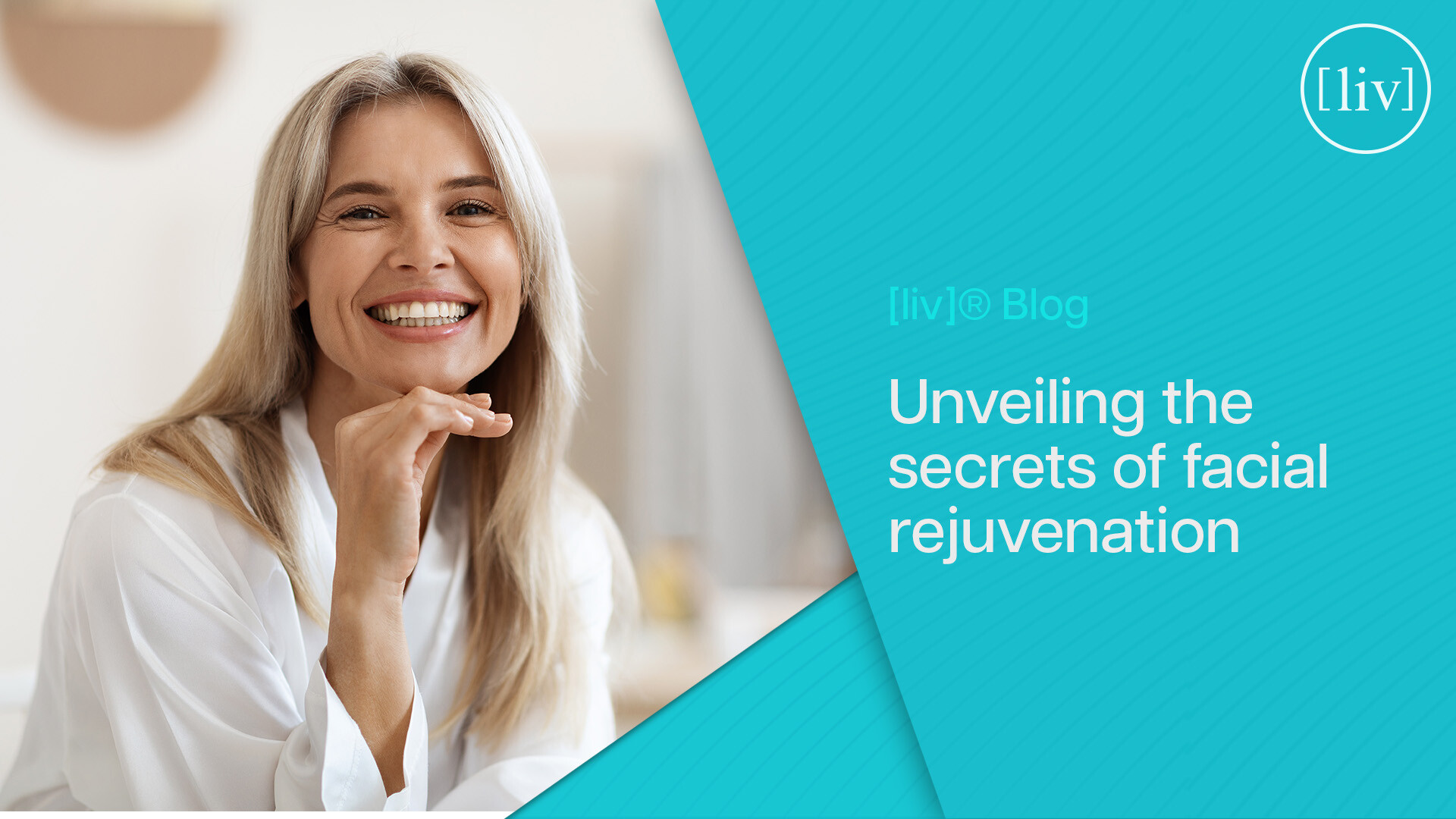Celebrate Mother's Day with Dr. Andrew Ress at [liv]
May 08, 2025
Shine Bright This Holiday Season: Unveil Your Best Self!
December 18, 2024

As we traverse the journey of aging, the telltale signs of time begin to manifest on our faces. Fine lines, wrinkles, crow’s feet, and sagging skin-and jowls - these are all natural consequences of the aging process.
Despite our best efforts with skincare regimens and non-invasive treatments, these visible markers of maturity often persist and intensify as our skin stretches and the underlying musculature deteriorates.
However, the news is not all grim. There are truly effective solutions to revitalize your appearance and bolster your confidence. Facelift procedures are always customized to address your unique concerns appearance and aspirations, helping you recapture a more youthful, vibrant look.
The Facelift Process
Why now? You need a facelift if pulling your facial skin back results in dramatically improved appearance; If Botox and fillers aren’t as effective as they were before; if you look tired even though you have lots of energy; If you are Glogau scale >3 (see reference)
The Facelift Process
Undergoing a facelift is a transformative experience that typically involves several key steps:
Consultation and Planning: The journey begins with a comprehensive consultation. Dr. Ress will assess your facial anatomy, discuss your aesthetic goals and concerns, and develop a customized surgical plan. This tailored approach may include a combination of facelift techniques to achieve the best possible outcome for you. No two people are alike and no two facelifts are the same.
Personalized Procedure: Each facelift is tailored to the individual’s needs. For those with more significant signs of aging such as prominent lines and excess skin, a Deep Plane facelift might be recommended. Alternatively, if you’re dealing with minimal lines and skin laxity, a Mini facelift could be the best option.
A facelift seeks to address these issues by:
-Removing excess skin
-Tightening underlying muscle
-Reposition and lifting structures that are out of their ideal position
-Smoothing deep wrinkles and folds
-Tightening the facial area
-Lifting facial tissues
Anesthesia:
The procedure is performed under either general anesthesia or intravenous sedation, ensuring your comfort and safety. With advancements in anesthetics, the process is safe for those in good overall health (Rohrich et al., 2016).
Incisions:
Incisions are strategically placed depending on the type of facelift. Typically, they are made along the hairline, around the ears, and possibly under the chin. These discreet incisions allow access to the underlying facial structures while minimizing visible scarring (Garcia & Nahai, 2019).
Tissue Repositioning:
Once incisions are made, Dr. Ress will carefully separate the skin from the underlying tissues, reposition the deeper facial structures, and remove any excess skin or fat. This meticulous process results in a smoother, more youthful facial contour (Popenko et al., 2017).
Closure:
After repositioning the tissues, incisions are closed with sutures or skin adhesives.
Dressings and compression garments may be applied to support the treated areas and promote healing (Seruya & Rohrich, 2011).
Recovery and Results:
Recovery from a facelift typically takes 2-4 weeks, during which you may experience swelling, bruising, and mild discomfort. Dr. Ress will provide detailed post-operative instructions and monitor your progress to ensure a smooth recovery. Over time, as swelling subsides and the skin settles, the rejuvenated appearance becomes more apparent (Fabi & Massaki, 2015).
Benefits of a Facelift
A well-executed facelift offers numerous benefits, including:
- A more youthful, refreshed appearance (Popenko et al., 2017)
- Reduction in wrinkles, fine lines, and sagging skin (Seruya & Rohrich, 2011)
- Improved facial contours and definition (Garcia & Nahai, 2019)
- Tighter, smoother skin around the jawline and neck (Rohrich et al., 2016)
- Enhanced self-confidence and overall appearance
Achieving these natural-looking, long-lasting results requires the expertise of a board-certified plastic surgeon like Dr. Ress, who tailors each procedure to your unique facial anatomy and aesthetic goals.
Complementary Facial Rejuvenation Treatments
To further enhance facelift results, Dr. Ress may recommend additional facial rejuvenation treatments:
- Brow Lift or Eyelid Surgery (Blepharoplasty): These procedures address aging signs in the upper face.
- Neck Lift: This treatment tightens and smooths the neck area, complementing the facelift (Fabi & Massaki, 2015). Typically a neck lift is done with a facelift.
- Dermal Fillers or Fat Grafting: These options restore volume and address hollowness in the face.
- Laser Skin Resurfacing or Chemical Peels: These treatments improve skin texture and tone, enhancing the overall youthful appearance.
These complementary procedures can be performed alongside a facelift or as part of a comprehensive facial rejuvenation plan (Rohrich et al., 2016).
Know Your Doctor
Dr. Andrew Ress, a board-certified plastic surgeon with over 30 years of experience, is renowned in Boca Raton and the greater South Florida area for his expertise and dedication to achieving his patients’ desired results. He trained at America’s top medical institutions: Mayo Clinic, Johns Hopkins, Cleveland Clinic and Indiana University. If you’re considering a facelift to rejuvenate your appearance, schedule a consultation with Dr. Ress today to discuss your personalized treatment plan.
Table of References
Reference
Popenko, N., Carruthers, J., Humphrey, S., & Carruthers, A. (2017). Quantitative analysis of patient-specific results of facial rejuvenation using structural fat grafting. Plastic and Reconstructive Surgery, 140(6), 949-958. DOI: 10.1097/PRS.0000000000003323
Seruya, M., & Rohrich, R. J. (2011). The skin redundancy trapdoor deformity and submandibular gland bulge following facelift surgery. Plastic and Reconstructive Surgery, 127(3), 1168-1175. DOI: 10.1097/PRS.0b013e31822d71d7
Garcia, R. M., & Nahai, F. R. (2019). Influence of the superficial musculoaponeurotic system on submandibular gland ptosis: Anatomical study and clinical application. Plastic and Reconstructive Surgery, 144(3), 724-733. DOI: 10.1097/PRS.0000000000006666
Rohrich, R. J., Rios, J. L., & Fagien, S. (2016). Scientific foundation for advanced facial rejuvenation: Anatomy, analysis, and application. Plastic and Reconstructive Surgery, 138(1), 1-11. DOI: 10.1097/PRS.0000000000002786
Fabi, S. G., & Massaki, A. (2015). Minimizing skin redundancy and trapdoor deformity in the submandibular region following lower face and neck rejuvenation. Plastic and Reconstructive Surgery, 136(4), 632-639. DOI: 10.1097/PRS.0000000000002222
May 08, 2025
December 18, 2024
Copyright © Liv Plastic Surgery 2025. All Rights Reserved

Consultations are complimentary in person or virtual.
We love our out of town patients!